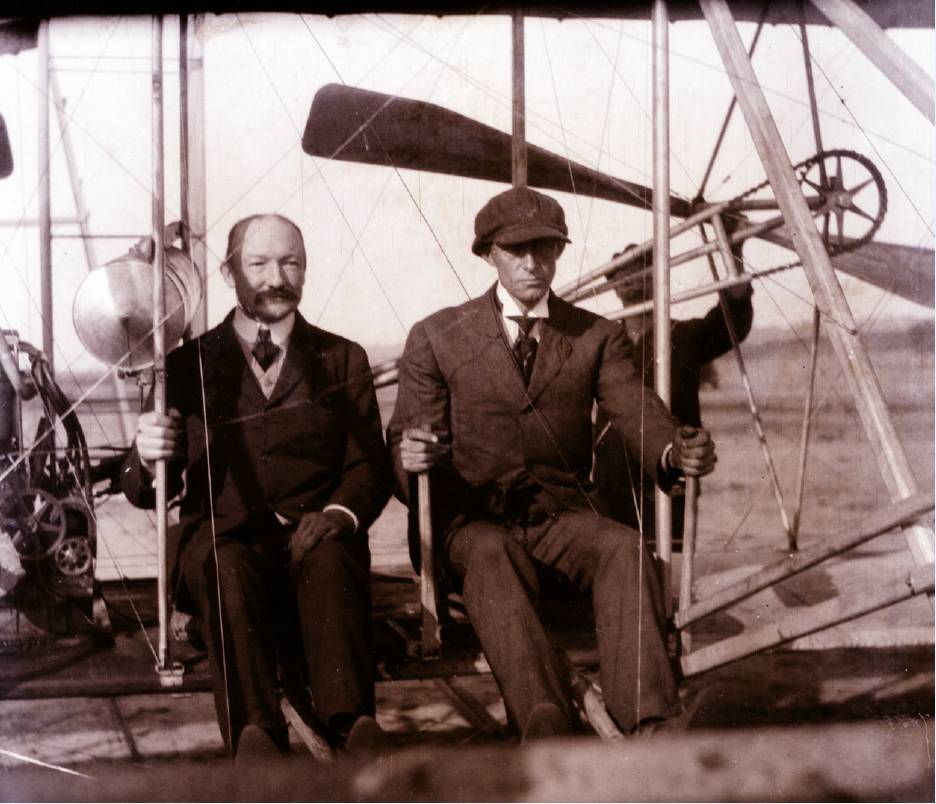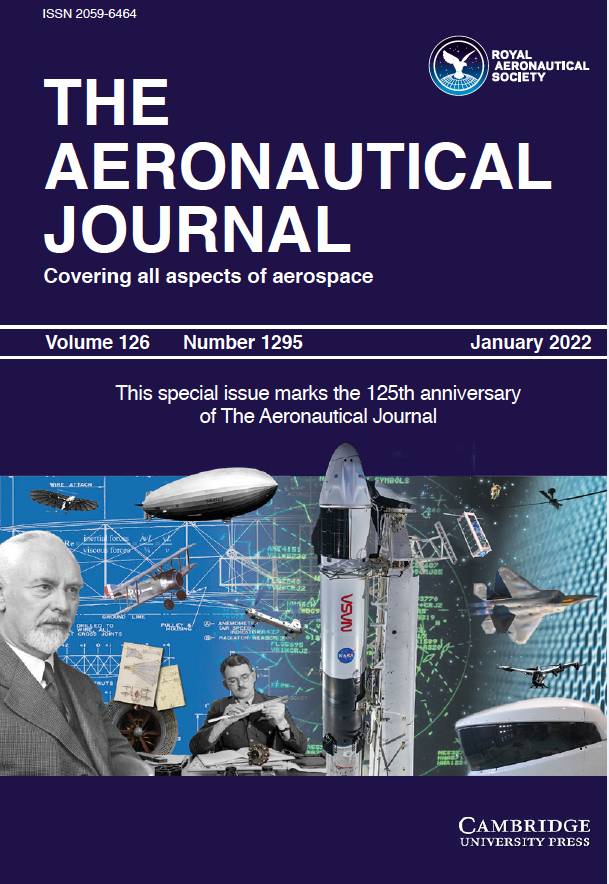The first edition of The Aeronautical Journal predates the first powered flight by the Wright brothers by some five years. Even then it was known that there was to be a rich future for powered flight.
125 years later, that potential has been realised with interest, from the initial hope of controlled sustained flight to flight powered entirely by electricity, transatlantic passenger flights, supersonic flight, missions to the Moon to building long-term crewed structures to circle in Earth orbit.
 Major B F S Baden Powell, left, and Wilbur Wright after the flight at Camp d’Auvours, 8 October 1908. RAeS (NAL).
Major B F S Baden Powell, left, and Wilbur Wright after the flight at Camp d’Auvours, 8 October 1908. RAeS (NAL).
It was 31 years after the formation of the Aeronautical Society (it was not to become ‘Royal’ until 1918) that The Aeronautical Journal was launched on a quarterly basis. It followed a series of Annual Reports that had, until then, documented the progress of early research into human-assisted flight.
At a council meeting of the Aeronautical Society, the newly installed Honorary Secretary, Captain (later Major) B F S Baden-Powell, a younger brother of the founder of the Boy Scout movement, announced that both a quarterly journal and a library would be created and operated by the Society. Funds of five guineas were made available to launch these. After it became clear that further funds were required, Baden-Powell himself subsidised the first three years of the Journal. Just 300 copies of the first edition, published in January 1897, were printed and it sold for two shillings. In it was reported the death of Otto Lilienthal, the celebrated German glider pilot who served as primary inspiration to Percy Pilcher, the British inventor and pioneering aviator.
Pilcher and Lawrence Hargrave, the British-born Australian engineer, explorer, astronomer, inventor and aeronautical pioneer were doing important work at the turn of the 20th Century on the theory of flight. Both found in the Journal, the perfect platform for reports of their research. Hargrave’s relationship with the Journal is particularly poignant, as he was a passionate believer in scientific communication as a key to furthering progress and as a result never applied for a patent for any of his inventions.
In these early years, The Aeronautical Journal would report news of developments in the world of aviation from across the world and provide a digest of patents, publish photographs and drawings. It would also republish interesting articles from other newspapers and magazines.
Maybe the greatest claim to fame for the Journal is a genuine relationship with maybe the greatest aeronauts of them all, Orville and Wilbur Wright. Early on in the history of manned flight there was an argument as to who flew first, Orville Wright or Samuel Langley, with Griffith Brewer taking the Wright’s side and Glenn Curtiss supporting Langley. The Wright v Langley argument played across the pages of the Journal leading to the original Wright Flyer ending up in the Science Museum, London. The Wright brothers famously wrote to the Smithsonian in 1899 to ask for all they had on the subject of flight. Among the suggestions were the articles on Hargrave and Pilcher that appeared in the Journal. The first UK report of the flights of the Wright brothers to be published as, ‘With the Power Flyer’, was written by Orville Wright and appeared in the April 1904 edition of the Journal. Wilbur Wright chose the Journal to publish his first-ever technical paper, on the ‘angle of incidence’.

In subsequent years, the Journal was to carry papers and articles from the great and the good, the key innovators and the creators from the history of international aviation. Work from F W Lanchester, J W Dunne, Octave Chanute, Ludwig Prandtl, Frederick Handley Page, Samuel F Cody, A V Roe, Gustave Eiffel, J T C Moore-Brabazon, Igor Sikorsky and Santos-Dumont, all appeared in the Journal. Many commonplace terms, and not just aeronautical phrases, appeared for the first time ever in print in the Journal such ‘take-off’, ‘state-of-the-art’, ‘de-ice’, ‘jammer’, ‘thermal’ and ‘turbocharger’.
